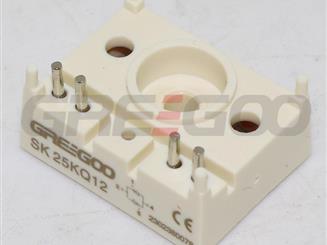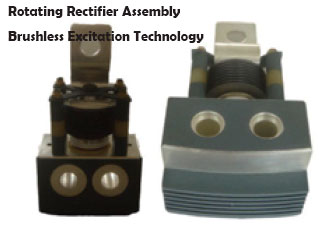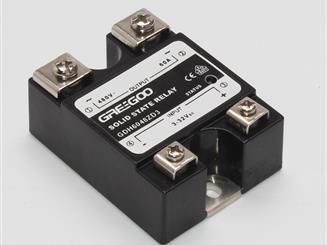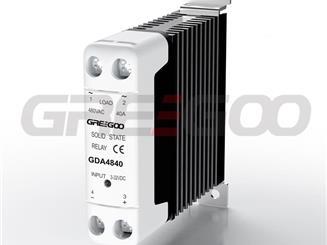1.14 kV Vacuum Contactors: Enhancing Safety and Efficiency in Low-Voltage Switching for Industry Application.
1.14 kV vacuum contactor is a specialized type of contactor that uses vacuum interrupters to switch electrical circuits at high voltages. Vacuum contactors are widely used in various industrial applications due to their reliability, safety, and efficiency. Here’s an overview of their applications, features, benefits and product types:
GVC5-80/125/160A 3 pole vacuum contactors | GVC5-250A 3 pole vacuum contactor | GVC5-400A 3 pole vacuum contactors | GVC313-630A/1140V Vacuum Contactors | GVC3-800/1000/1250A 3 pole vacuum contactors | GVC7-1600A 3 pole vacuum contactors | GVC611-2000A/2600A/3200A 3 pole vacuum contactors
Applications
- Industrial Automation: Control of high-power machinery and motors.
- Power Distribution: Switching in medium-voltage power distribution networks.
- Mining: Operation of heavy equipment and machinery in mining operations.
- Renewable Energy: Switching in solar farms and wind energy systems.
- Transportation: Control of electrical circuits in railways and urban transit systems.
Features
- Vacuum Interrupters: Use vacuum to extinguish arcs, providing excellent arc-quenching capabilities.
- High Voltage Handling: Designed to handle voltages up to 1.14 kV.
- Compact Design: Typically smaller and lighter than air-insulated contactors.
- Long Electrical Life: Capable of withstanding numerous switching operations.
- Low Maintenance: Minimal maintenance requirements due to the absence of ionized gases and reduced wear and tear.
Benefits
- Increased Safety: Vacuum interrupters eliminate the risk of arc flash, enhancing safety for operators.
- Reliability: High reliability due to robust construction and fewer moving parts.
- Efficiency: Efficient operation with low energy consumption for maintaining contacts.
- Environmental Friendliness: No use of SF6 gas or other harmful substances.
- Longevity: Long operational life reduces the need for frequent replacements.
Product Types
- Standard Vacuum Contactors: General-purpose vacuum contactors for typical industrial applications.
- Magnetic Latching Vacuum Contactors: Maintain their state without continuous power, saving energy.
- High-Frequency Vacuum Contactors: Designed for applications requiring frequent switching.
- Custom Vacuum Contactors: Tailored to meet specific application requirements.
Example Products
- Siemens 3TL Vacuum Contactor Series: Known for high reliability and long service life, suitable for various industrial applications.
- Eaton VCP-W Vacuum Contactor: Offers compact design and robust performance for medium-voltage applications.
- ABB VSC Series Vacuum Contactors: Provide excellent arc-quenching capabilities and are suitable for a wide range of applications.
Conclusion
1.14 kV vacuum contactor is an essential component in many high-voltage switching applications, offering superior safety, reliability, and efficiency compared to traditional contactors. Its use of vacuum interrupters makes it particularly suitable for environments where safety and longevity are critical concerns.

Anti-parallel Thyristor Modules
Anti-parallel Thyristor Modules, Semikron Design, compact size, high reliability.
Read More
Excitation technology rectifier components for 30-1350MW steam turbine generators
No maintenance of slip rings and carbon brushes, high reliability; There is no pollution of the motor coil caused by carbon powder and copper powder, and the insulation life is long; No friction sparks, suitable for operation in harsh environments.
Read More
𝑪𝒐𝒏𝒔𝒊𝒅𝒆𝒓𝒂𝒕𝒊𝒐𝒏𝒔 𝒇𝒐𝒓 𝑺𝒐𝒍𝒊𝒅 𝑺𝒕𝒂𝒕𝒆 𝑹𝒆𝒍𝒂𝒚𝒔 𝑺𝒆𝒍𝒆𝒄𝒕𝒊𝒐𝒏
For resistive loads, a 2-3 times higher load current can be selected. For inductive or capacitive loads, a 3-4 times higher load current can be selected.
Read More
How to choose a suitable Solid State Relays
Single phase or three phase, nominal voltage and current, potential surge or inrush current, AC or DC load, control signal, zero crossing type or random control ssr etc.
Read More














